#defacement
Text
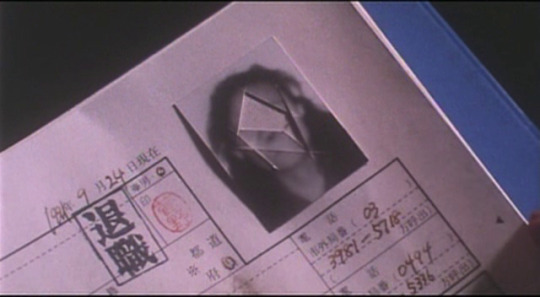

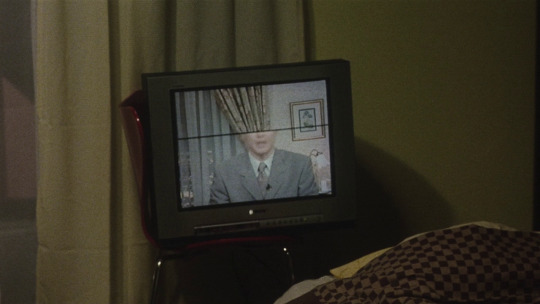
Kiyoshi Kurosawa
- Door III (1996)
- Cure (1997)
- Pulse / Kairo (2001)
2K notes
·
View notes
Text

192. Defacement - Defacement (Death/Black Metal, 2021)
Art by @sloppjockey / Dusty Ray
#metal#death metal#black metal#war metal#art#artwork#music#painting#heavy music#artist#cover art#heavy#sloppjockey#defacement#netherlands
52 notes
·
View notes
Text

'Alex'
Series Degenerations 2022
www.colorador.de
#contemporary art#photography#collage#artists on tumblr#abstract art#digitalcollage#berlin#defacement#digitalart#collageart#art
2 notes
·
View notes
Photo

#rotstift #censorship #buffart #platte #wermenschen #defacement #parole #spurloser (hier: Friedrichshain) https://www.instagram.com/p/Cdypxm0LoRa/?igshid=NGJjMDIxMWI=
4 notes
·
View notes
Text

#txt#figured he would be goodto deface the nothingburger post with hes literally the definition of nothingburger
27K notes
·
View notes
Text
Growing Concern Over Role of Hacktivism in Israel-Hamas Conflict
Hacktivists have claimed to hit Israeli websites through DDoS and defacement attacks following the outbreak of conflict between Israel and Hamas. Cybersecurity experts now warn of signs of more impactful attacks being attempted.
Researchers from Radware found that Israel endured 143 DDoS attacks between October 2 and October 10, making it the most targeted nation state during that period. These…
View On WordPress
0 notes
Text
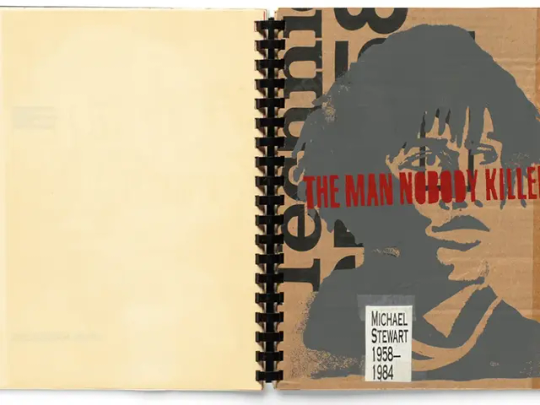
Jean-Michel Basquiat is too often under-curated. Consider the bland, context-less survey on view earlier this year at the Brant Foundation’s New York space, a private museum project of President Trump’s childhood friend Peter Brant, or the Brooklyn Museum’s 2018 “One Basquiat,” an “exhibition” consisting of a single $110.5-million-dollar painting. An easy reliance on the aura of this famous black artist with a high market value and a fatal heroin addiction often takes the place of any insightful narration. His name is enough to draw in hordes.
“Basquiat’s ‘Defacement’: The Untold Story,” an exhibition on view at the Solomon R. Guggenheim Museum in New York through November 6, centers on the artist’s 1983 painting Defacement (The Death of Michael Stewart), which depicts an instance of police violence that occurred in September of that year. After allegedly tagging a wall in the East Village’s First Avenue subway station, Michael Stewart, a twenty-five-year-old black artist from Brooklyn, was beaten by the New York City Transit Police, put into a chokehold, and handcuffed to his bed while comatose at Bellevue Hospital in Manhattan. He died thirteen days later from cardiac arrest. The specifics of the attack are contested—Did Stewart attempt to flee? Did he become violent?—but to me, they don’t matter. Stewart is still dead. Stewart will always be dead. That matters.
And such mattering matters to the occasion of the exhibition itself. Chaédria LaBouvier, the show’s guest curator, is the first black person to single-handedly organize an exhibition at the Guggenheim, which was founded in 1939. There is no way the show would have been possible without Black Lives Matter, and the discussions around state violence and blackness that the movement mainstreamed. “Basquiat’s ‘Defacement’” could be seen as an attempt on the part of the Guggenheim to reach outside its spiral shell and address issues of racial injustice, or it could suggest opportunism and politicking.
In addition to the title painting, the impeccably researched exhibition features works by other artists, including David Hammons, Keith Haring, Lyle Ashton Harris, and Andy Warhol, that deal with Stewart’s death; archival materials like buttons, a protest flyer made by David Wojnarowicz, and posters for benefit performances and parties raising money for Stewart’s family to pursue legal action following his death and the officers’ acquittal; and paintings that Basquiat created in the years prior to the 1983 incident, including Irony of a Negro Policeman (1981), La Hara (1981), Untitled (Sheriff), 1981, and CPRKR (1982), that share themes concerning oppression and the violence engendered by racism and capitalism. The assortment of works on view makes the exhibition seem larger than its two rooms, but the focus and political angle feel so tight that the effect is almost suffocating.
There are two main reasons to step into this claustrophobic space, each compelling in its own right: The Death of Michael Stewart and the art of Michael Stewart. Soon after Stewart’s death, Basquiat, using acrylic paint and marker, made The Death of Michael Stewart on a wall of Haring’s studio. After Basquiat died, of an overdose at the age of twenty-seven, Haring cut the painting out of the wall, had it placed in an ornate frame, and hung it over his bed, where it remained until he died from AIDS complications in 1990. Depicting two baton-wielding pink-faced cops flanking a limbless black figure, the work is devoid of the signature Basquiat symbols that have been used for tattoos a million times over: the crowns, the African masks. Instead, we get the scrawled term ¿DEFACIMENTO©?—a questioning of the police account of Stewart’s death—and a deluge of white space, which make the painting feel all the more urgent. A small collection of Stewart’s own line-obsessed abstract sketches, of which no photographs are allowed, is encased in a glass vitrine. Would the art of Michael Stewart come to us without the death of Michael Stewart? Would his work be exhibited if it weren’t for the spectacle of his suffering and for his memorialization by Basquiat?
The Death of Michael Stewart was not originally meant to be viewed by the public. But Basquiat arguably always kept some sense of an audience in mind, even when he was working in relative anonymity at the start of his career, spray-painting buildings in downtown Manhattan with poetic lines using the tag SAMO©. By the time he created The Death of Michael Stewart, he must have known that, given his success, most of his work would eventually circulate. Perhaps he also knew that everyone loves a dead black man.
Jean-Michel Basquiat is too often under-curated. Consider the bland, context-less survey on view earlier this year at the Brant Foundation’s New York space, a private museum project of President Trump’s childhood friend Peter Brant, or the Brooklyn Museum’s 2018 “One Basquiat,” an “exhibition” consisting of a single $110.5-million-dollar painting. An easy reliance on the aura of this famous black artist with a high market value and a fatal heroin addiction often takes the place of any insightful narration. His name is enough to draw in hordes.
“Basquiat’s ‘Defacement’: The Untold Story,” an exhibition on view at the Solomon R. Guggenheim Museum in New York through November 6, centers on the artist’s 1983 painting Defacement (The Death of Michael Stewart), which depicts an instance of police violence that occurred in September of that year. After allegedly tagging a wall in the East Village’s First Avenue subway station, Michael Stewart, a twenty-five-year-old black artist from Brooklyn, was beaten by the New York City Transit Police, put into a chokehold, and handcuffed to his bed while comatose at Bellevue Hospital in Manhattan. He died thirteen days later from cardiac arrest. The specifics of the attack are contested—Did Stewart attempt to flee? Did he become violent?—but to me, they don’t matter. Stewart is still dead. Stewart will always be dead. That matters.
And such mattering matters to the occasion of the exhibition itself. Chaédria LaBouvier, the show’s guest curator, is the first black person to single-handedly organize an exhibition at the Guggenheim, which was founded in 1939. There is no way the show would have been possible without Black Lives Matter, and the discussions around state violence and blackness that the movement mainstreamed. “Basquiat’s ‘Defacement’” could be seen as an attempt on the part of the Guggenheim to reach outside its spiral shell and address issues of racial injustice, or it could suggest opportunism and politicking.
In addition to the title painting, the impeccably researched exhibition features works by other artists, including David Hammons, Keith Haring, Lyle Ashton Harris, and Andy Warhol, that deal with Stewart’s death; archival materials like buttons, a protest flyer made by David Wojnarowicz, and posters for benefit performances and parties raising money for Stewart’s family to pursue legal action following his death and the officers’ acquittal; and paintings that Basquiat created in the years prior to the 1983 incident, including Irony of a Negro Policeman (1981), La Hara (1981), Untitled (Sheriff), 1981, and CPRKR (1982), that share themes concerning oppression and the violence engendered by racism and capitalism. The assortment of works on view makes the exhibition seem larger than its two rooms, but the focus and political angle feel so tight that the effect is almost suffocating.
There are two main reasons to step into this claustrophobic space, each compelling in its own right: The Death of Michael Stewart and the art of Michael Stewart. Soon after Stewart’s death, Basquiat, using acrylic paint and marker, made The Death of Michael Stewart on a wall of Haring’s studio. After Basquiat died, of an overdose at the age of twenty-seven, Haring cut the painting out of the wall, had it placed in an ornate frame, and hung it over his bed, where it remained until he died from AIDS complications in 1990. Depicting two baton-wielding pink-faced cops flanking a limbless black figure, the work is devoid of the signature Basquiat symbols that have been used for tattoos a million times over: the crowns, the African masks. Instead, we get the scrawled term ¿DEFACIMENTO©?—a questioning of the police account of Stewart’s death—and a deluge of white space, which make the painting feel all the more urgent. A small collection of Stewart’s own line-obsessed abstract sketches, of which no photographs are allowed, is encased in a glass vitrine. Would the art of Michael Stewart come to us without the death of Michael Stewart? Would his work be exhibited if it weren’t for the spectacle of his suffering and for his memorialization by Basquiat?
The Death of Michael Stewart was not originally meant to be viewed by the public. But Basquiat arguably always kept some sense of an audience in mind, even when he was working in relative anonymity at the start of his career, spray-painting buildings in downtown Manhattan with poetic lines using the tag SAMO©. By the time he created The Death of Michael Stewart, he must have known that, given his success, most of his work would eventually circulate. Perhaps he also knew that everyone loves a dead black man.
#Black Ghosts: Basquiat’s “Defacement” at the Guggenheim#Defacement#Basquiat#Jean Michel Basquiat#Michael Stewart#cops#nyctc#nyc#ed koch#fuck koch#street Artists#Graffiti#The Death of Michael Stewart was not originally meant to be viewed by the public. But Basquiat arguably always kept some sense of an audien#spray-painting buildings in downtown Manhattan with poetic lines using the tag SAMO©. By the time he created The Death of Michael Stewart#most of his work would eventually circulate. Perhaps he also knew that everyone loves a dead black man.
0 notes
Text
harrows biggest problem is that she can't stop turning herself into a living mausoleum of the person she loves, which is not great, but it is leagues better than johns biggest problem, which is turning other people into living mausoleums of the people he loves
#something something all the lyctors are like defaced gravestones on two legs#the locked tomb#the locked tomb spoilers
2K notes
·
View notes
Text

A vengeful melancholy thickens on her brow, turning her inside-out.
#Defacement#Woman#Following Eurydice#Monochrome#Black&White#Fujifilm XPro1#XF23mmf1.4R#Surfaces#Memento Mori
0 notes
Link
#western australia#news#art#vandalism#spray paint#defacement#woodside#art gallery of western australia#frederick mccubbin#painting#slacktivists
0 notes
Note
I just read your NSFW alphabet and hear me out. Jason fucking reader in the batmobile, let the man play out his fantasy
may your harvest be bountiful anon. I was praying someone would ask for this muahaha 😈 you can find the prompt from the nsfw alphabet here ❣️
18+ minors dni
warnings: semi-public but not really 🏎️
★・・・★・・・★・・・★
you should probably have tried to sound a little more appalled when jason todd told you he’d ‘borrowed’ the batmobile, but there was something about the way he was sitting in the driver’s seat, with his red hood mask over his face, and his arm hanging out of the window, that weakened your resolve.
all it took was a cock of his head and a coy, “you gettin’ in, ma?” for your scowl to melt into a giddy smile. that’s how you found yourself here; zig-zagging through traffic in gotham with a barely-reformed crime lord piloting the in the batmobile like it’s a ferrari. sure, piss off batman. what could go wrong?
thankfully, you don’t have time to dwell on the thought as jason’s hand inches up your thigh, slipping under the hem of your short dress. “wanna take a detour?” he asks, and you can practically hear his grin under the mask. you glance over at him with a smirk as he veers off the city’s main motorway, heading towards the old harbour.
★・・・★・・・★・・・★
jason’s large hands knead the soft flesh of your ass harshly as you grind against him on his lap, dragging you along his rock hard length and drawing out another whine from your lips. maybe it’s the knowledge that you’re in the batmobile when you definitely shouldn’t be, maybe it’s that jason is in his full red hood gear, or maybe it’s just because it’s car sex—whatever the reason, there’s a sense of urgency between you that has you both rearing to go now.
you lean back slightly to unbuckle jason’s belt, your back bumping into the steering wheel as your hands move dextrously. “shit, you in a rush, princess?” he chuckles, but you barely hear him. your lower lip is between your teeth as you work fast to free his cock from his boxers, and he hisses in pleasure as you pump him gently, smearing his precum down his shaft. he reaches between your legs to hook his finger around your panties, pulling the gusset to the side.
his green eyes widen as he feels your slick drooling out of you—fuck, you really are in a rush. you align your hips with his again, teasing your entrance with the tip of his cock. in the dim light of the setting sun, he can see the way your eyes flutter shut at the feeling, and it sends heat rushing down his abdomen. you brace yourself on his shoulder with your free hand, sinking down on him gradually. you’re so wet that it only takes a moment to adjust to his size before you’re rocking against him again, and he pulls you back in for another hungry kiss, guiding your hips with his hands.
jason grins as he feels your cunt tightening around him when he brings his fingertips to your clit. “what, already, ma?” he teases, pretending his own release isn’t just moments away. “c’mon, that’s gotta be a new record.” you try to laugh, but he increases the pressure on your clit, and you arch your back as the coil in your belly tightens. shit, you realise, you’re about to cum in the fucking batmobile.
“fuck, jay, I’m so—” you begin, tangling your fingers in his hair. he cuts you off by sucking harshly at the delicate skin of your throat, and instantly you feel the coil snap. you cry out as you convulse around jason’s cock, slumping forward onto his muscular chest with a shiver. the sensation of your walls clamping down on him like a vice makes jason dig his fingers into your flesh as he pumps his own release into you, swearing raggedly as his hips buck.
the batmobile is silent apart from your heavy breaths, and the windows are conspicuously fogged up. you’re glad the harbour is deserted, or rumours might start circulating about what batman gets up to in his free time. jason runs his hands along your back tenderly, laughing to himself. “what?” you ask with a smile, picking your head up off his chest.
“that’s been on the bucket list for a while’,” he grins, and you giggle. you’re about to pull him in for another kiss when an incoming message from bruce wayne that makes your eyes widen lights up the dash. you know there’s a tracker in the car. I suggest you and your guest bring it back now. there’s a pause, and you and jason share a panicked look right as a second message comes through. in good condition.
#jason todd 🤝 defacing the batmobile#his beef with that car…unparalleled#luv u brucie xoxo#jason todd#jason todd smut#jason todd x reader#jason todd x you#red hood#red hood smut#red hood x reader#red hood x you#dc comics#batman#batfam#batmobile#fem reader#batboys
1K notes
·
View notes
Text
FBI Warns of Hacktivist DDoS Attacks, But Says Impact Limited
FBI Warns of Hacktivist DDoS Attacks, But Says Impact Limited
Home › Cybercrime
FBI Warns of Hacktivist DDoS Attacks, But Says Impact Limited
By Ionut Arghire on November 07, 2022
Tweet
The Federal Bureau of Investigation (FBI) has issued an alert to encourage organizations to proactively implement distributed denial-of-service (DDoS) attack defenses in the wake of hacktivist assaults, but says incidents so far have had little impact.
Seeking to overload…
View On WordPress
0 notes
Text
Random ITSV facts that only I care about probably
Some fun ITSV facts from your local half-hispanic half-black Brooklynite Spider-man fan (me not Miles). ANYWAY
Miles has the number 11215 on his bookbag. That's his zip code.
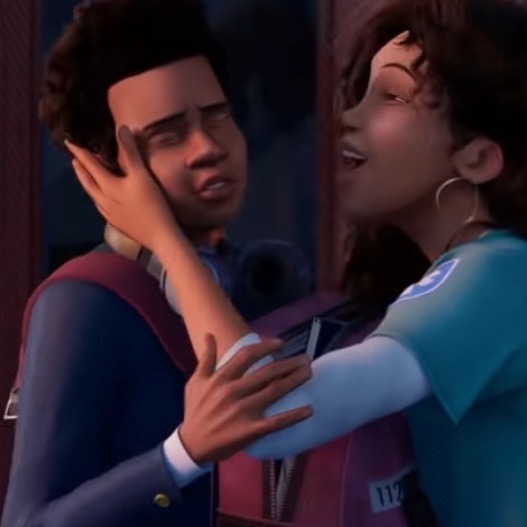
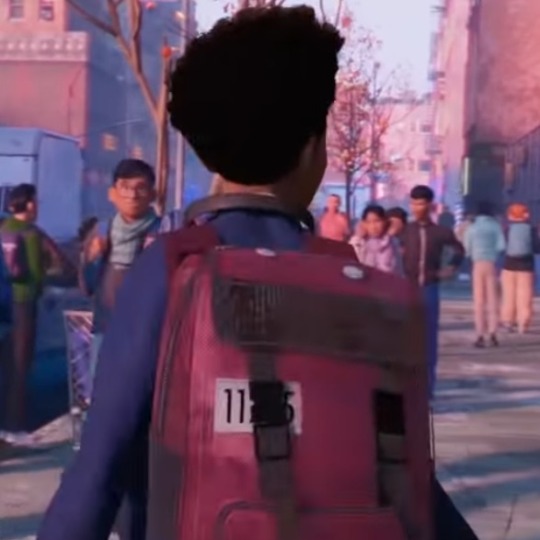

This means officially, Miles lives in Park Slope. On the edge of Williamsburg.
The movie is spot on with the architecture.
We get a shot of Miles house in ITSV that basically confirms he lives in Park Slope. Not only is the 'real' Visions Academy near Park Slope (the actual school is called Midtown High. His school is a blend of two specialized tech schools in NYC - Midtown and Brooklyn Tech, both of which are near Park Slope).


Miles is 'Slapping'.

Writing your graffiti tag on stickers and putting them around the city is a genuine form of graffiti in NYC called slapping.
It's done on 'eggshell' stickers which are basically impossible to get off, and the goal is to put as is stickers around with your name in the hardest to reach places. If you walk around Manhattan and look closely, you can start seeing sticker tags like this.
One of the most common ones I see is Peru Ana Ana Peru
Here's some of mine though 😌😉


Wythe Avenue is a real Avenue.
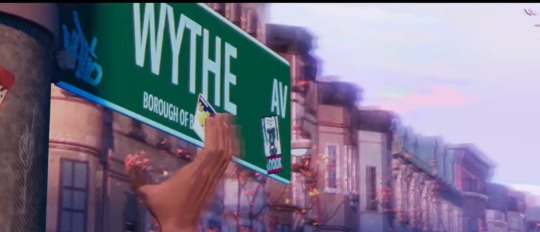

I spoke about this in the past but it's just another instance of ITSV and ATSV being SO accurate to Brooklyn that they even get the street names, locations, and stores correct.
The store that Spot robs is a REAL BODEGA.
Anyway these were just things I caught after rewatching the ITSV trailer and I thought they were cool 🥺 BYE
#defacing public property rules#Hobie says buy a paint marker and just go for it#only if you can run fast tho#spiderman#atsv#spider man#marvel#across the spiderverse#spiderman itsv#itsv#miles morales
531 notes
·
View notes
Text

Schoolwork is finely kicking my ass so here are some quick quick Castiels I did in class. He's so mecoded.
#my art#Ganemo draws something that isnt nbc hannibal challenge: defaced#supernatural#spn fanart#supernatural fanart#spn castiel#castiel supernatural#castiel#spn#castiel spn#procreate#digital ilustration#sketches#digital sketch#castiel fanart
948 notes
·
View notes


